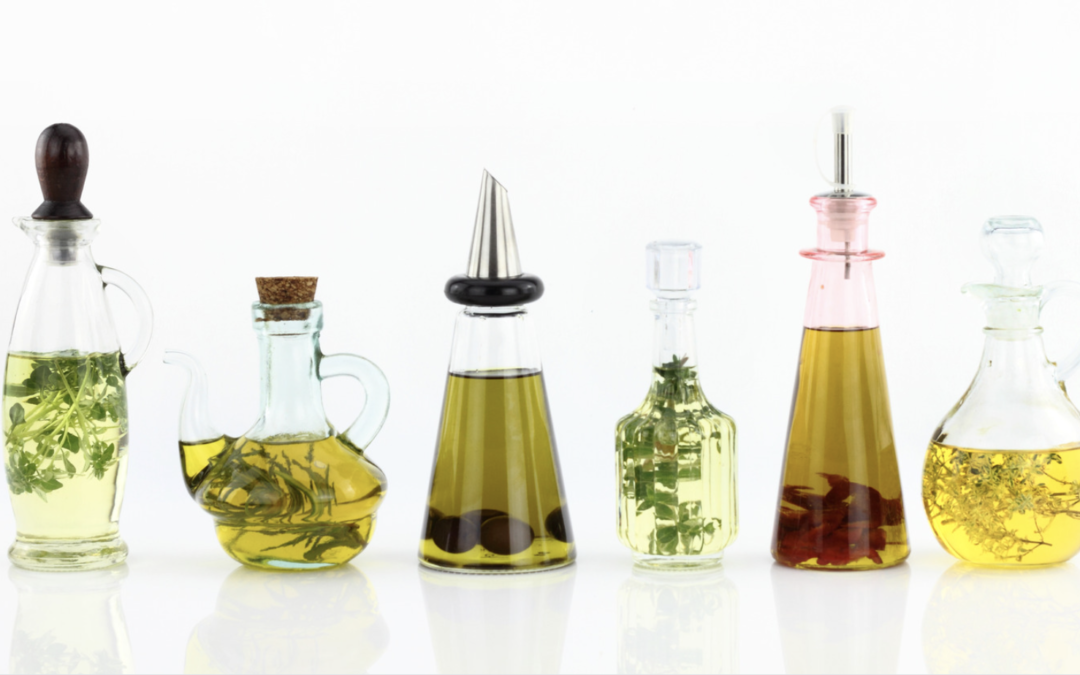Cooking oils are essential to any kitchen, bringing flavor, texture, and functionality to our culinary creations. With a wide variety of cooking oils available, choosing the right one for specific dishes can get confusing.
Let’s explore the different types of cooking oils, their unique characteristics, and how to use them in your everyday cooking. And as with most things, organic is best.
Olive Oil
One of the most popular and versatile cooking oils is olive oil. Its rich, fruity flavor comes in various types. Extra virgin olive oil is cold-pressed and unrefined, making it ideal for drizzling over salads or finishing dishes. Virgin olive oil is suitable for sautéing and very light cooking only. Light olive oil has a milder flavor and higher smoke point, making it suitable for high-heat cooking like frying.
Coconut Oil
Coconut oil has gained popularity for its unique flavor and potential health benefits. It can be used in both cooking and baking and is a common choice for vegan and plant-based recipes. Coconut oil is solid at room temperature but melts at higher temperatures. Great for high-heat cooking as well.
Avocado Oil
Avocado oil is perfect for sautéing, roasting, and grilling. It contains heart-healthy monounsaturated fats and is rich in antioxidants and vitamin E. It has a very high smoke point, so it’s suitable for high heat cooking.
Peanut Oil
Peanut oil has a slightly nutty flavor and is suitable for deep-frying and stir-frying. It is commonly used in Asian cuisine for its ability to withstand high heat.
Sesame Oil
Sesame oil comes in two varieties: toasted and untoasted. Toasted sesame oil has a robust, nutty flavor and is often used as a finishing oil for stir-fries and salads. Untoasted sesame oil is milder and used in cooking, imparting a delicate sesame flavor.
Grapeseed Oil
Grapeseed oil has a light, delicate flavor, making it suitable for a variety of cooking methods. It is a good source of polyunsaturated fats and vitamin E.
Each oil brings its unique flavor and characteristics, influencing the taste and texture of your dishes. Consider the smoke point, flavor profile, and health benefits of each oil to elevate your cooking experience and create delicious, well-balanced meals. Happy cooking!
[RECIPE]: GLUTEN FREE “OATMEAL”
Serves:1
Ingredients (use organic where possible): 
- 1/4 cup coconut flour
- 1/4 cup canned coconut milk
- 3/4 cup water
- 1/2 banana, thinly sliced
- 1 egg, whisked
- 1/3 cup canned pumpkin
- 1/3 cup coconut chips/shredded coconut (optional but gives it an oatmeal-like texture)
- 1 teaspoon cinnamon
- 1 teaspoon vanilla extract
- Sea salt to taste
- Dollop of coconut oil (if desired)
Directions:
- In a pot over medium heat, combine the flour, coconut milk, water, and banana. Stir constantly until everything is combined and banana is broken up.
- Add egg and whisk until cooked and fully incorporated. Turn heat to low and stir in the remaining ingredients.
- Serve warm with a dollop of coconut oil if desired.
- If you prefer a sweeter oatmeal, you can use a full banana or add a sweetener of choice.
- Optional: Top it with your favorite fruits or nuts






